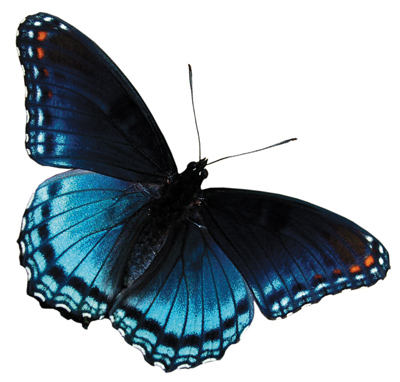 Seeing our first monarch butterfly of the season was especially pleasing since reports from field researchers predict that the number of monarchs will be down by more than 25% this year.
Seeing our first monarch butterfly of the season was especially pleasing since reports from field researchers predict that the number of monarchs will be down by more than 25% this year.
By Paul Hicks
 Seeing our first monarch butterfly of the season was especially pleasing since reports from field researchers predict that the number of monarchs will be down by more than 25% this year. This continues a long-term downward trend in the monarch population.
Seeing our first monarch butterfly of the season was especially pleasing since reports from field researchers predict that the number of monarchs will be down by more than 25% this year. This continues a long-term downward trend in the monarch population.
Development of previously open fields is often cited as a primary cause of the monarch decline. Also, a drought in Texas and other southern states has further reduced the acres of milkweed where monarchs lay their eggs and the caterpillars find their food. For more information on monarchs and milkweed, go to www.learner.org/jnorth/monarch/.
Despite fewer monarchs, there has been a large and, in some cases, a record number of other species of butterflies in our area in the past month. In Canada, it is estimated that up to 300 million butterflies showed up in the eastern half of the country this spring, from Ontario to New Brunswick. That is more than 10 times what would be seen in a typical year.
Among those still passing through this area are red admirals, medium-sized velvety black butterflies with orange bands on their wings, which are about half the size of monarchs. They migrate up from the southern states and Mexico and are usually found in this part of the country later in the summer. This year, however, they arrived earlier than usual, thanks to warmer temperatures as well as some strong southerly winds.
Among our favorite recent discoveries were two examples of the very striking red-spotted purple butterfly. It is a medium-size species which has iridescent blue coloring with orange and white spotting and a white edging to its wings. The guidebooks note that it “mimics” another bright blue species, the pipevine swallowtail, which is toxic, and thus it gains protection from hungry birds.
 The various types of swallowtails are the largest butterflies in this area. They can all be readily identified by the long tails on their hind wings. One of the easiest to spot is the eastern tiger swallowtail. Most of them have bright yellow wings with black stripes and often are seen flying high among the trees in backyards.
The various types of swallowtails are the largest butterflies in this area. They can all be readily identified by the long tails on their hind wings. One of the easiest to spot is the eastern tiger swallowtail. Most of them have bright yellow wings with black stripes and often are seen flying high among the trees in backyards.
It can be a challenge, however, to distinguish among four species of dark-colored swallowtails: the black, spicebush, pipevine, and black form of the female eastern tiger swallowtail. When you become sufficiently “hooked” on butterflies and long before you become a lepidopterist like Vladimir Nabokov, you need a field guide.
There are some comprehensive ones, like the “Audubon Society Field Guide to North American Butterflies,” but the best one for beginners in this area is “Butterflies Through Binoculars: A Field Guide to Butterflies in the Boston-New York-Washington Region”. The author is Jeffrey Glassberg.
There are a number of online sources to consider, including the website North American Butterfly Association website (naba.org) which has some useful information on butterfly gardening. It also has a link to the National Butterfly Center in Mission, a 100-acre garden in the Lower Rio Grande Valley (LRGV) of Texas.
It is located there because nearly 40% of the 700 species of butterflies in the U.S. can be found in or near the site in Mission, Texas. With over 300 species, the LRGV has more butterfly types than the entire eastern section of the country.
Another online resource is Butterflies and Moths of North America (butterfliesandmoths.org). It invites citizen scientists of all ages and experience levels to submit photos of butterflies and moths along with their observations. The result is a rich database that can be accessed through the Image Gallery, whether or not you are a registered user or photo submitter.
Even if you are not ready to immerse yourself in the world of lepidoptera, if you enjoy being outdoors, especially around flowers, you will probably enjoy butterflying, which Glassberg defines as “actively searching for butterflies in order to observe and identify them.”















